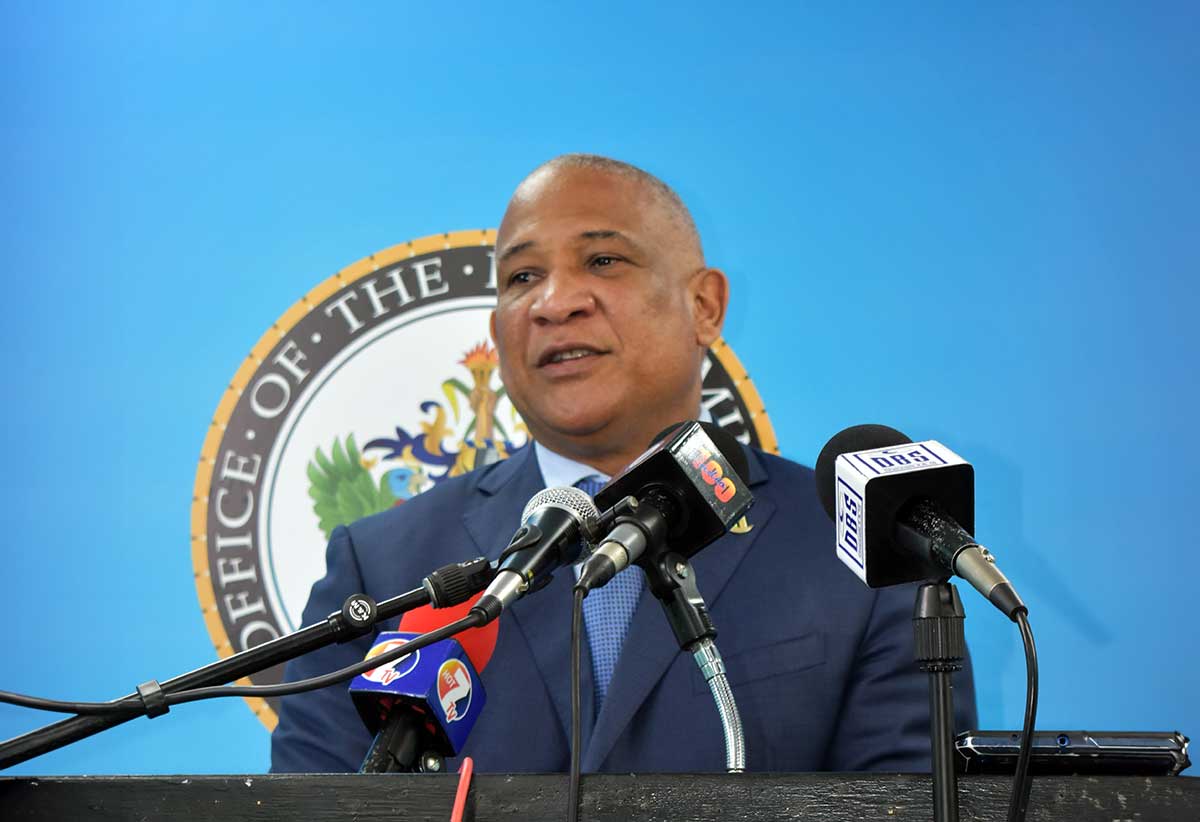
Over the years, air travel has posed a major problem for regional governments, but currently, according to the authorities, there are prospects in store for increased air traffic by next year.
On Monday, Tourism Minister Dr. Ernest Hilaire addressed the airlift issue and travel into the region at a media briefing apart from the weekly Cabinet meetings.
Consequently, the minister says, he is all for implementing a Public Sector Solution to deal with this burning issue.
He noted that there has been a major shift in the international airline schedules to the region, which shows signs of an increase in flights by next year.
“Certainly, the airlift will improve over Q4 (2023) and Q1 in 2024. We went through a difficult period this summer… and as Europe opens up a lot of the airlines have put (upgraded) their equipment for travel to Europe,” Hilaire told reporters.
The minister added that the Far East has also opened up with “quite a lot of equipment” to provide services for their clients. He reported that tourism personnel have been involved in “very intense discussions” with airline carriers, and anticipates “that we are going to see a major improvement…and we are going to see significant increases in airlift capacity internationally, and we continue to work with airlines to improve it.”
He said the airline companies would divulge more information on this matter in due course, with the likes of American Airlines, Delta, and Jet Blue “also to increase (flights) and we’re expecting very strong showings for stayover arrivals for the season Q4 into Q1.”
Hilaire also disclosed that the cruise season is due to open in about the next three weeks and “it’s going to be our busiest cruise season ever”.
Nonetheless, the minister could not help but lament the perennial “headache” that the airline issue poses to the region and global partners. He stated that discussions have been held with Inter Caribbean, and the company has acquired more equipment and planes and is expecting some more.
Referring to LIAT, Hilaire said, the regional airline company is still at a “stalemate”; while Caribbean Airlines has also increased its airlift capacity with more equipment and planes “and it’s getting better …and more and more the airlines are starting to get back equipment”.
He said that post Covid, it has taken some time for the airlines to resume their operations, since “a lot of the pilots had to be retrained and recertified, some of the planes that were given up have to be brought back into service and some have orders for new planes that they are still waiting for.”
However, the minister noted, “It’s getting better …and hopefully, sometime next year we will return to a state of normalcy.”
“Notably”, declared Hilaire: “A lot will depend on the future of LIAT. Saint Lucia has stated its position, clearly – that we support a Public Sector Solution to connectivity in the region. We will also support private sector interventions, but we feel that there must be a public sector solution to supplement the private sector. Because we’ve learned in the past that when the private sector is challenged by economic difficulties and pulls away, we have to have something to carry us through.
“And if we had a public sector solution in place, we would not be suffering as we are.”
He noted that this is an important factor for Saint Lucia, “because regional arrivals were our second largest source, so it was the US, regional, UK, Canada …and with the region declining so significantly, it has affected our regional numbers.”
Added Hilaire: “Because Saint Lucia was a very attractive regional destination …we have a very vested interest in a regional solution.”
The International Air Transport Association (IATA) is the trade association for the world’s airlines, representing some 300 airlines or 83% of total air traffic.
Meanwhile, an IATA semi-annual report undertook a broad look at developments in the airline industry, the context in which it is operating, and the challenges it is facing, under the theme: Global Outlook for Air Transport – Highly Resilient, Less Robust.
Interestingly, the report states that, as was the case throughout 2022, early 2023 saw a series of macro-economic challenges: labour markets remained exceptionally tight, inflation levels elevated, and global supply chains were disrupted.
The report adds: “A further challenge facing both the global economy and aviation is climate change. Airlines need the support of policy makers and all participants in the value chain to achieve the transition, because airlines do not make its own fuel, nor aircraft. The industry is committed to achieve net zero emissions by 2050, as is the UN’s ICAO (International Civil Aviation Organization) and its Member States.”
Furthermore, “Looking forward, the demand for air travel is expected to double by 2040, growing at an annual average rate of 3.4%. Origin-destination passengers are projected to increase from around 4 billion in 2019 to just over 8 billion at the end of the forecast horizon.”
Consequently, the experts deduce, “The industry is returning to profitability in 2023, only three years after the historic loss of USD 140 billion in 2020. Total airline revenue is expected to recover to around 93% of the 2019 figure, with operating profits reaching USD 22.4 billion. The net profit forecast for this year is USD 9.8 billion, and the net margin a slim 1.2%. This equates to USD 2.25 per passenger.”





